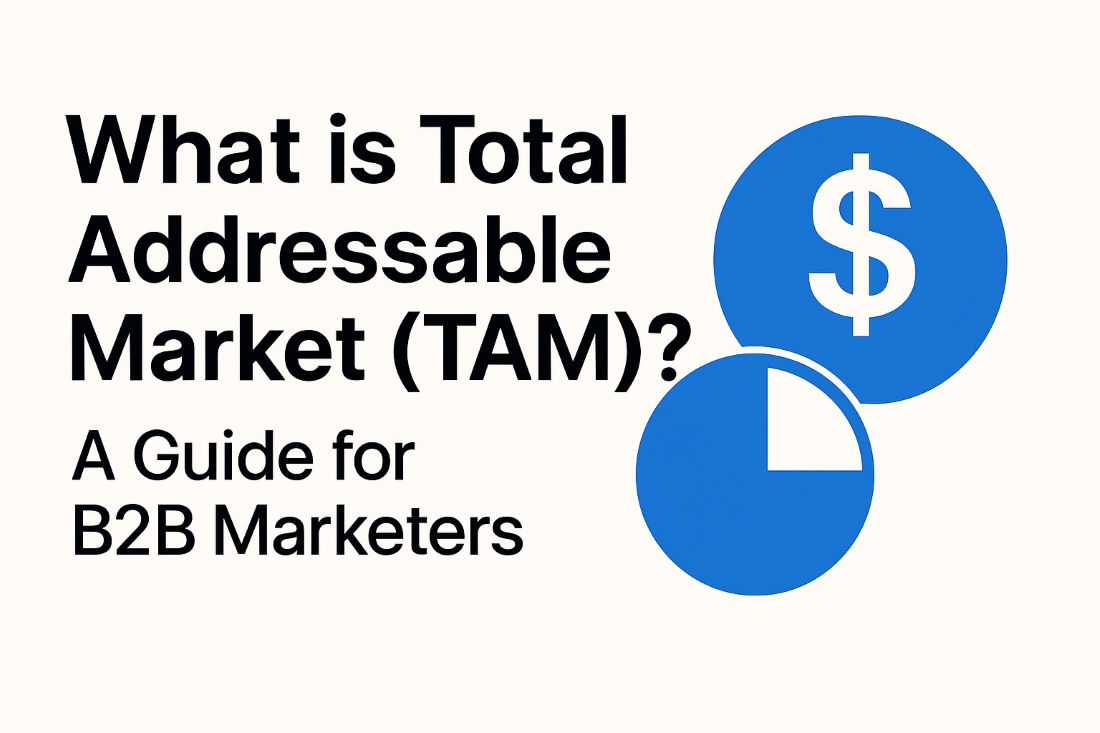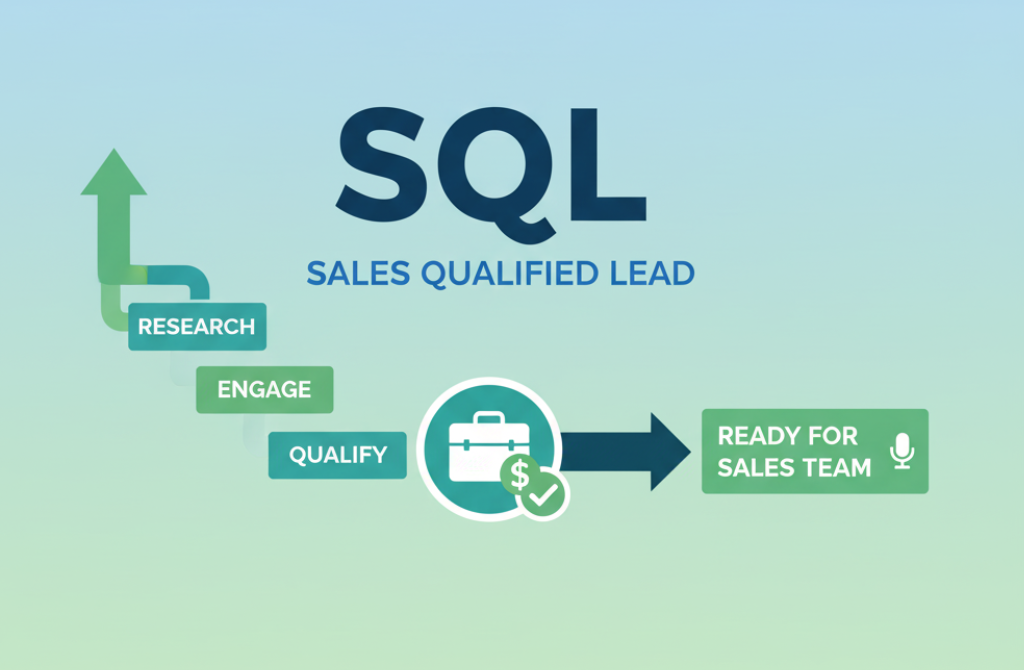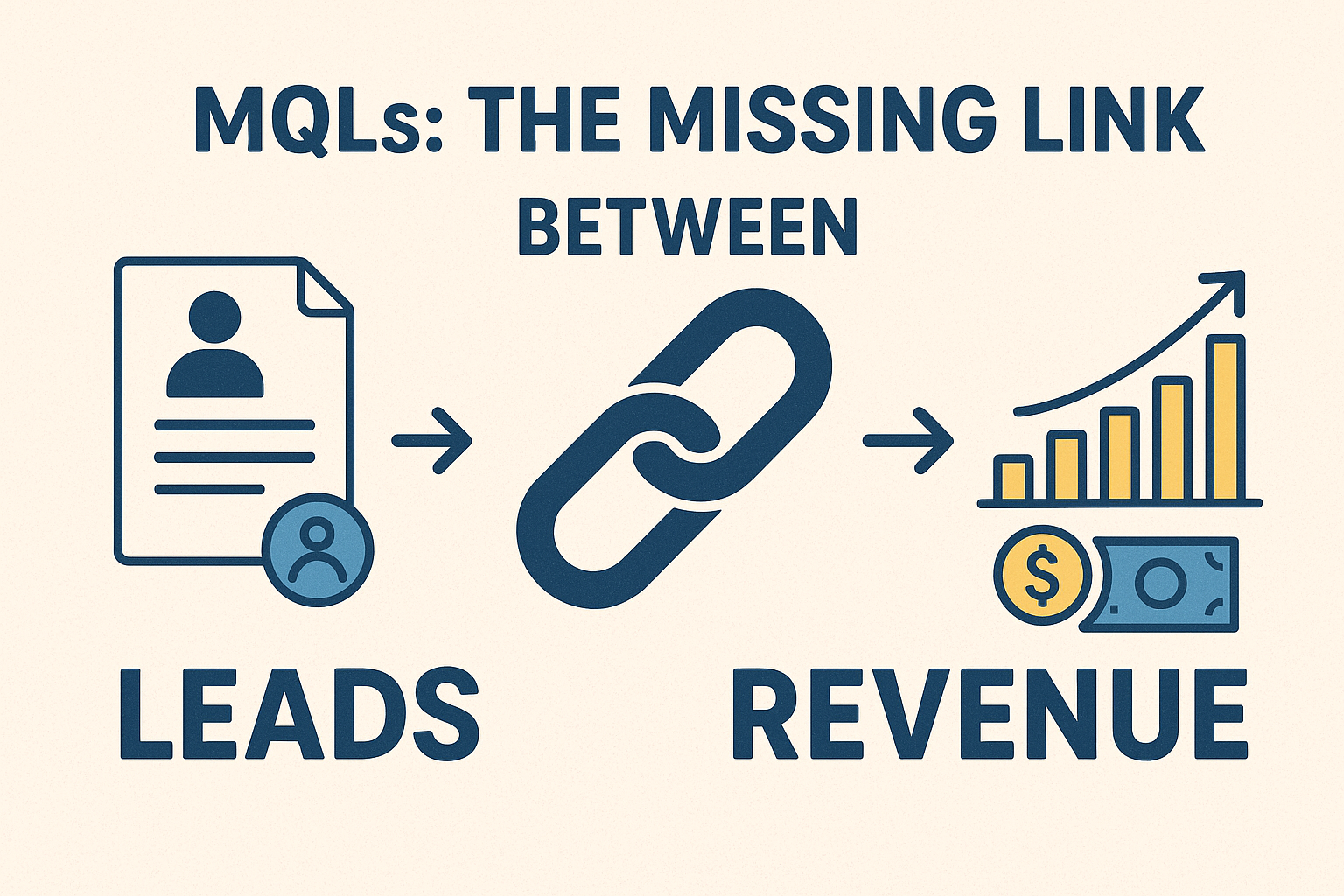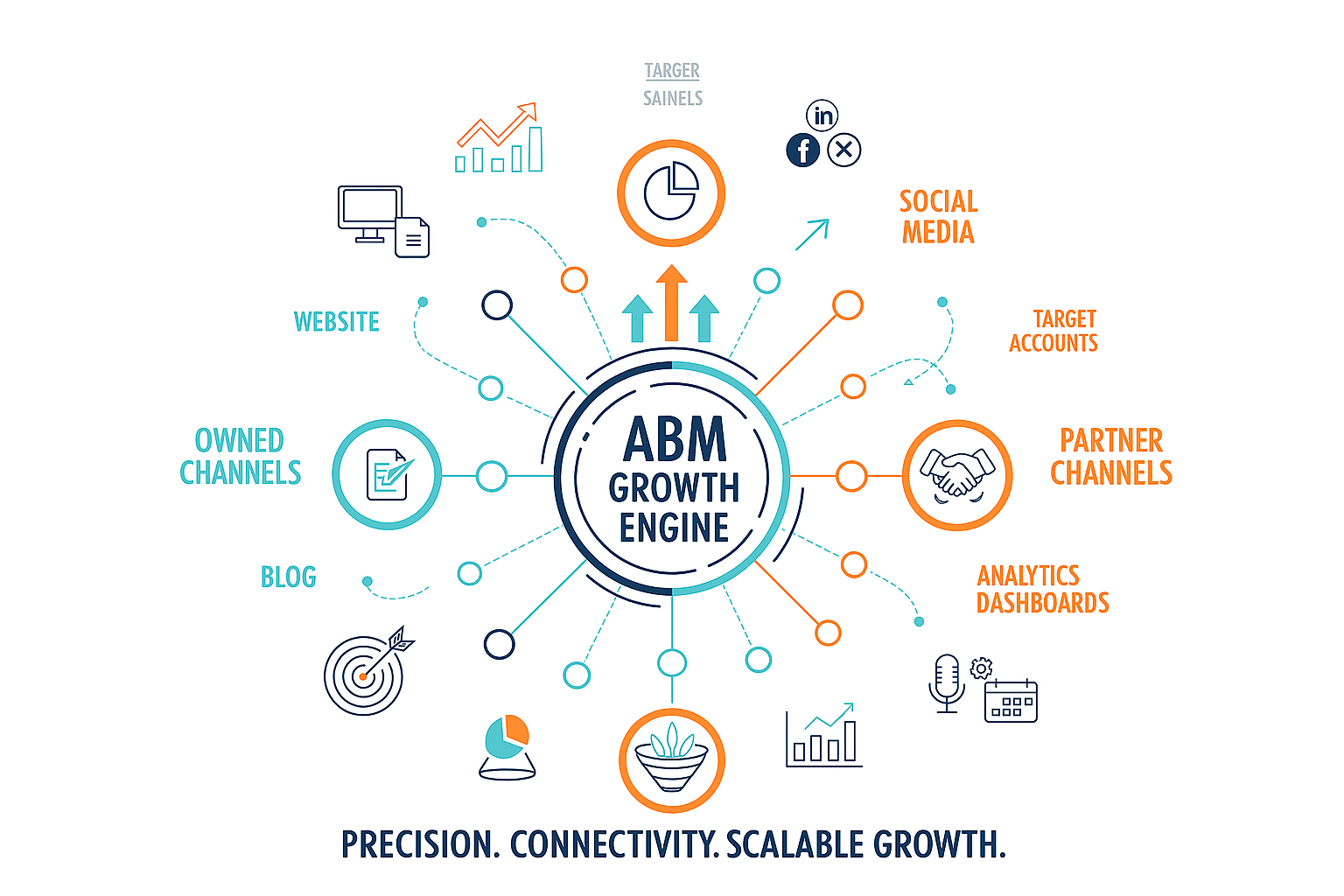Table of Contents
ToggleWhy Market Size Could Make or Break Your Growth Strategy
Imagine building the perfect B2B product, only to realize a year later that your market was never big enough to sustain growth. Or worse, chasing leads across every possible industry without knowing whether those prospects could ever add meaningful revenue. That’s where Total Addressable Market (TAM) comes in.
In B2B lead generation, TAM is not just a number; it’s the compass that guides targeting, budgeting, and sales strategy. Without it, you risk spreading efforts too thin, burning through ad spend, or pitching to the wrong accounts. With it, you know exactly how big the opportunity is, which segments matter most, and how to align marketing with revenue goals.
This blog breaks down everything you need to know about Total Addressable Market in B2B, from definitions and calculation methods to common pitfalls and lead generation applications.
What Is Total Addressable Market (TAM)?
Total Addressable Market is the total revenue opportunity available for a product or service if a business were to capture 100% of its potential market. In simple terms, it’s the ceiling of your growth potential, the size of the entire market demand for your offering.
For example, if your SaaS product costs $5,000 annually and 100,000 businesses could realistically use it, your TAM equals $500 million.
TAM helps answer critical questions like:
- How big is the market opportunity for my solution?
- Is there enough demand to support growth and investment?
- Which segments should I prioritize?
But knowing TAM alone isn’t enough. You also need to break it down into SAM (Serviceable Available Market) and SOM (Serviceable Obtainable Market) to set realistic, actionable targets.
TAM vs. SAM vs. SOM: The Market Opportunity Pyramid
Understanding TAM, SAM, and SOM is essential for realistic growth planning. Think of it as a pyramid where TAM represents the broadest opportunity, and SOM narrows it down to the slice you can actually win.
1. TAM (Total Addressable Market): The Broad Opportunity
TAM is the total demand for your product or service if you captured every possible customer in the world.
Example:
Imagine your company offers an AI-powered CRM platform. In theory, every business that relies on customer management could use it. Let’s say there are 50 million businesses worldwide that could potentially benefit. If your software costs $5,000 per year, your TAM = $250 billion (50 million × $5,000).
TAM shows investors the maximum potential, but it’s not your real market – it’s the dream scenario.
2. SAM (Serviceable Available Market): The Realistic Fit
SAM narrows TAM by considering the portion of the market you can actually serve, given factors like:
- Geography (your sales reach and support infrastructure)
- Industry relevance (your solution may not suit all industries)
- Regulatory or compliance barriers
Example (continued):
Your AI CRM is optimized for mid-sized companies (50–500 employees) in North America that already use cloud-based tools.
- Mid-sized firms in North America using cloud-based solutions = 500,000 businesses.
- If each pays $5,000/year, your SAM = $2.5 billion.
SAM is where your marketing and sales strategies should focus, not the entire global audience.
3. SOM (Serviceable Obtainable Market): The Achievable Target
SOM goes a step further and identifies the slice of SAM you can realistically capture based on your current resources, competition, and go-to-market strategy.
Example (continued):
You have a sales team of 50 reps and marketing that can reach ~20,000 qualified accounts per year. Realistically, you might close 1,000 firms in the next 2–3 years.
- 1,000 customers × $5,000/year = $5 million annual revenue.
- That’s your SOM, the share of the market you can confidently pursue.
SOM keeps projections grounded and helps sales teams set achievable goals instead of chasing “every company everywhere.”
Why TAM Matters for B2B Lead Generation
- Focused Targeting: Defining TAM prevents scattershot campaigns. Instead of chasing every lead, you know exactly which industries, company sizes, or regions matter most.
- Smarter Budgeting: Lead gen budgets often vanish into low-yield campaigns. A TAM analysis highlights where spend will drive the highest ROI.
- Sales Alignment: Sales teams hate chasing unqualified leads. TAM narrows the focus to accounts that not only fit but also matter.
- Investor Confidence: If you’re fundraising, a realistic TAM signals scalability. Over-inflated numbers turn investors off; credible TAM builds trust.
- Long-Term Strategy: Markets evolve. Tracking TAM growth (or shrinkage) helps you pivot before competitors do.
How to Calculate Total Addressable Market (TAM)
There’s no one-size-fits-all approach. Most B2B companies use one of three methods:
1. Top-Down Approach
Start with broad industry data and narrow it down.
Formula:
TAM = (Total market size) × (Relevant segment percentage)
Example:
- Global HR software market: $35B
- SMB share: 40%
- TAM = $14B
Pros: Quick, great for investor decks.
Cons: Relies heavily on third-party research; risk of over-estimation.
2. Bottom-Up Approach
Build TAM using your own data, average revenue per customer (ARPC) multiplied by the total number of potential accounts.
Formula:
TAM = (Number of potential customers) × (ARPC)
Example:
- Your SaaS generates $5,000 per customer annually.
- 30,000 potential clients exist.
- TAM = $150M.
Pros: Data-driven, credible, highly relevant.
Cons: Requires reliable internal and external data sources.
3. Value-Theory Approach
Estimate TAM based on the value your product delivers to each customer.
Formula:
TAM = (Perceived customer value) × (Number of potential customers)
Example: If your AI saves a logistics firm $100,000 per year, and 10,000 firms exist, TAM = $1B.
Pros: Works well for innovative or disruptive products.
Cons: Harder to validate; can vary widely by customer perception.
Common Pitfalls When Defining TAM
- Inflated Numbers for Investor Appeal: It’s tempting to inflate TAM with unrealistic assumptions. But smart investors can spot this, and credibility suffers.
- Ignoring Segmentation: Not all businesses within TAM are equal. Failure to segment (by industry, size, or geography) leads to wasted outreach.
- Static Thinking: Markets shift. A TAM calculated two years ago may already be outdated due to new tech, regulations, or buyer behavior.
- Mixing Up TAM and Leads: TAM is not your lead list. It’s the opportunity universe, not the immediate sales funnel.
Applying TAM to B2B Lead Generation Strategy
1. Ideal Customer Profile (ICP) Development
Your ICP defines the “perfect-fit” customer. TAM data helps refine this by identifying which industries, company sizes, and geographies represent the biggest revenue opportunities.
Example: Instead of targeting all SaaS firms, you might discover that mid-market healthcare SaaS companies make up 30% of your TAM. That insight makes your ICP sharper and your outreach more efficient.
2. Account-Based Marketing (ABM)
ABM works best when campaigns are hyper-focused. TAM insights reveal the highest-value accounts in your target segment.
Example: If your TAM analysis shows that 500 financial services firms control 60% of your market potential, you can create tailored campaigns specifically for those accounts, maximizing ROI instead of spreading resources thin.
3. Lead Scoring and Qualification
Not all leads are equal. TAM lets you weight your scoring system toward industries, regions, or company sizes that align with your largest opportunities.
Example: A lead from your core TAM segment (say, U.S. healthcare SaaS) could automatically score higher than a lead from an unrelated vertical, even if both show interest. This ensures sales spend time on the right opportunities.
4. Market Expansion Decisions
TAM analysis helps answer: “Is this market worth entering?” Before expanding to new regions or verticals, TAM shows the revenue ceiling.
Example: If your TAM analysis reveals that expanding into Europe adds only 5% to potential revenue but entering manufacturing adds 25%, you know which expansion is more strategic.
5. Performance Benchmarking
Growth goals often lack context. By comparing captured revenue to your SOM, you can measure true market penetration.
Example: If your SOM is $100M and you’ve captured $10M, you know you’ve secured 10% of the realistic market opportunity. This creates clear, data-backed benchmarks for growth.
Tools That Help Define TAM in B2B
- ZoomInfo & Clearbit → For identifying target accounts and firmographics.
- Statista & Gartner → For top-down market data.
- Salesforce CRM Reports → For bottom-up TAM projections.
- Custom B2B Databases → For niche segmentation.
Conclusion
At its core, Total Addressable Market (TAM) is not just a figure for pitch decks; it’s the foundation of smart B2B lead generation. TAM tells you where the money is, who the right buyers are, and how to prioritize campaigns.
By combining accurate TAM analysis with strategic segmentation, you’ll stop wasting energy on “everyone” and start focusing on the accounts that matter most. The result? Stronger engagement, higher conversions, and faster revenue growth.
I hope you find the above content helpful. For more such informative content, please visit PangeaGlobalServices.






